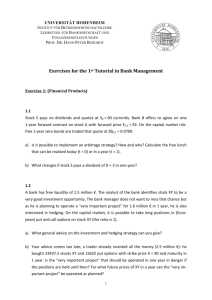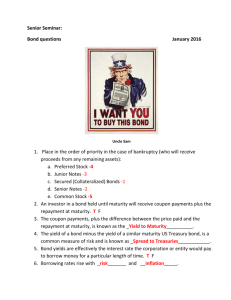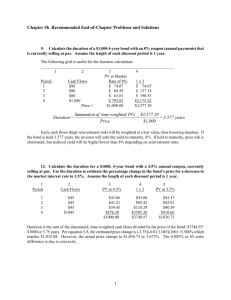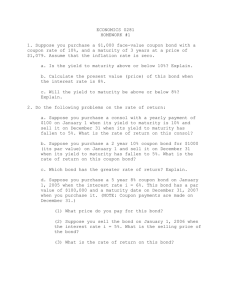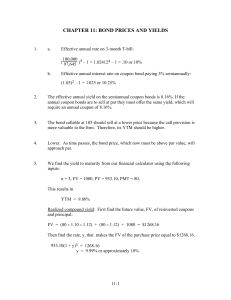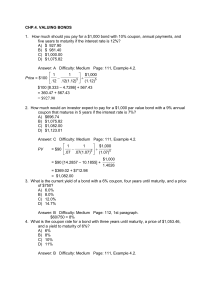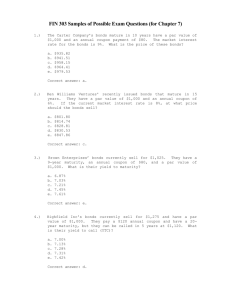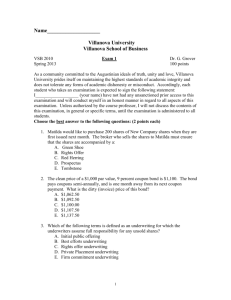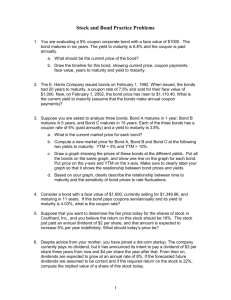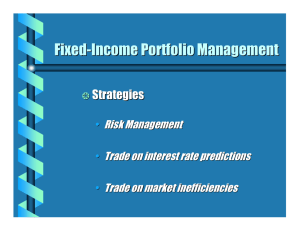Bond Portfolio Management
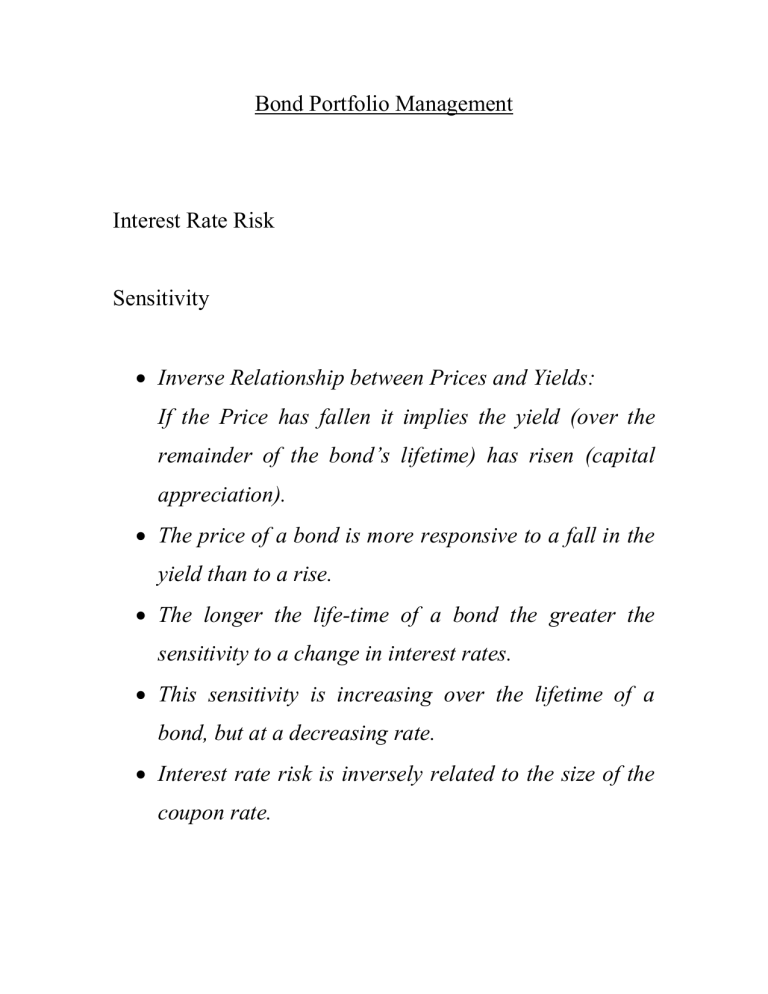
Bond Portfolio Management
Interest Rate Risk
Sensitivity
Inverse Relationship between Prices and Yields:
If the Price has fallen it implies the yield (over the remainder of the bond’s lifetime) has risen (capital appreciation).
The price of a bond is more responsive to a fall in the yield than to a rise.
The longer the life-time of a bond the greater the sensitivity to a change in interest rates.
This sensitivity is increasing over the lifetime of a bond, but at a decreasing rate.
Interest rate risk is inversely related to the size of the coupon rate.
The higher the current yield to maturity, the less sensitive the price is to changes in the yield.
Duration
Duration is a measure of the (weighted) average of time one has to wait to receive coupon payments.
The weight of each unit of time is given by the relative contribution of each payment to total payments (in present value terms).
Assuming continuously discounted yield to maturity:
P
i n
1
C i exp(
yt i
)
i n
1
PV i
Differentiating this with respect to y : dP dy
i n
1 t C i
i exp(
yt i
)
A change in P with respect to a (proportional infinitesimal) change in y is equal to the negative of a weighted sum of the present values of each payment.
Multiplying with dy and dividing by P dP
P
i n
1 t i
C i exp(
yt i
)
dy
P
i n
1 t i
PV
P i
dy and defining Duration as:
D
i n
1 t i
PV
P i
dy
We have that a relative change in P is a function of a proportional change in y and the duration of the bond.
Macaulay’s duration:
A weighted average of the times of each payment made by the bond.
The weights are chosen to reflect the proportion of total payments that occur at that time. Here, we use the ratio of the present value of each payment to the price of the bond. w t
CF t
(1
y ) t
P
Time we simply denote in numbers of periods from a certain point in time.
If a period is a year, and we are concerned with the time of the first payment of a semi-annual bond from now, then t =
0.5.
Thus, duration is equal to:
D
t
T
1 t w t
N.B.: w
T
> w t for t ≠ T
.
Since the final payment of a bond’s income stream includes the par value as well as a coupon payment.
N.B.: t
T
1 w t
1
Since it is the sum of the percentage of each payment’s present value in the present value of all payments.
P
P
y )
1
y
Modified Duration:
Denote D* = D /( 1+y
) and Δ y =
Δ(1+ y )
P
D *
y
P
Rules of Duration
1.
Zero Coupon bonds’ duration is identical to its maturity.
2.
For bonds of equal maturity the duration is greater for bonds with lower coupon rates. (The final payment takes a larger share in total income).
3.
Holding the coupon rate constant, the duration of a bond generally increases in time to maturity. This is always so for bonds trading above or equal to par.
4.
Cet. par., a bond’s duration is higher when its yield to maturity is lower. (Later periods are more relevant to
the present value of the income stream relative to earlier ones)
5.
The duration of a perpetuity is (1+ y ) /y
6.
The duration of an annuity is:
1
1 y
(1
T y )
T
1
7.
The duration of a coupon bond equals:
1
1 y
(1
y )
(
y ) c [(1
y )
T
1] y
8.
For coupon bonds trading at par this simplifies to:
1
1 y
1
1
(1
y )
T








